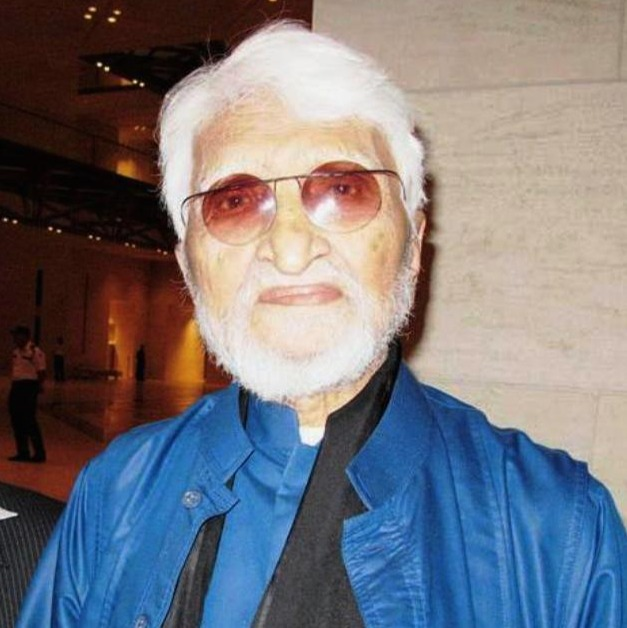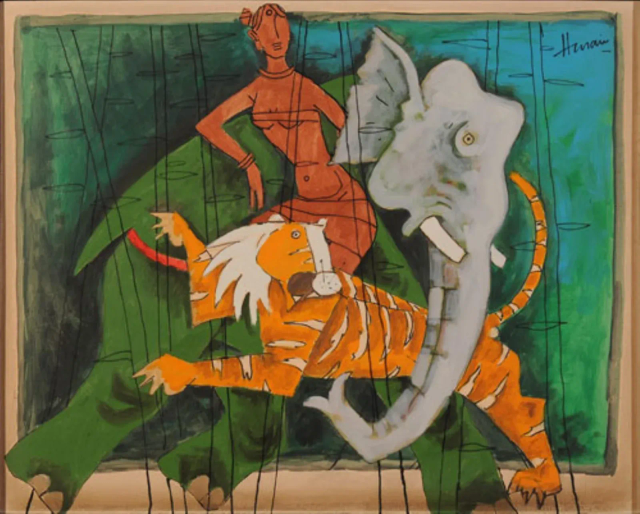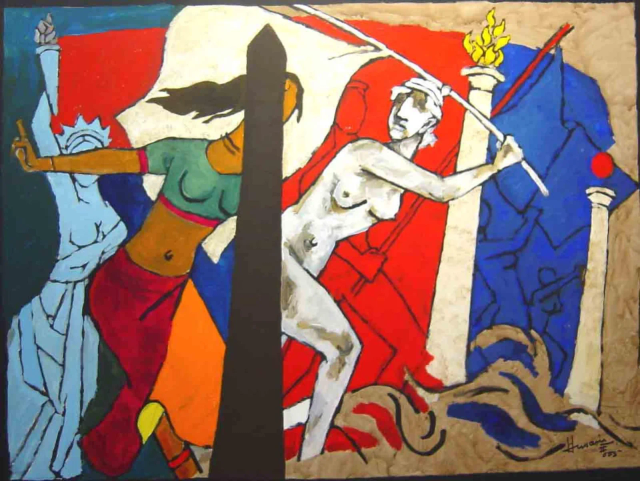
M. F. Husain
M. F. Husain is one of the most influential figures in contemporary art, whose artistic contributions were significant in modernizing the Indian art movement.
Biography of the M. F. Husain
Maqbool Fida Husain, born in 1915 in Pandharpur, Maharashtra, had a difficult childhood after losing his mother at an early age. He was raised by his grandfather Abdul, and in 1919, he moved to Indore to be with his father. During his time in Indore, he independently began drawing and painting, enrolled in religious education, developed a fascination with cinema and languages, wrote Urdu poetry, and became interested in calligraphy. Leaving the diploma course at the Indore School of Art, Husain was admitted into the Sir J. J. School of Art but couldn't complete his studies due to his father's death. Subsequently, he moved to Bombay, got married, and found a job at a furniture shop where he designed nursery furniture and wooden toys.
In 1948, Husain left his job to join the Progressive Artists' Group, founded by F.N. Souza. In 1950, he held his first solo exhibition in Bombay and traveled across South Asia and Europe, interacting with renowned artists such as Chi Pei She, Emile Nolde, Paul Cézanne, Paul Klee, and Pablo Picasso. In 1954, he painted his influential masterpiece, "Passage of Time," which marked the beginning of his globally known horse paintings. Husain went on to hold solo exhibitions in various cities, including Zurich, Prague, Tokyo, Baghdad, Kabul, Rome, New York, Bombay, and New Delhi. He also created life-size murals for Air India and the Lalit Kala Academy in New Delhi. In 1963, he painted his first portrait, depicting Jawaharlal Nehru.
Maqbool Fida Husain received several accolades throughout his career. In 1959, he won an award at the Tokyo Biennale, and in 1966, he was honored with the Padma Shri by the Government of India. In 1986, he became a member of the Rajya Sabha (the Upper House of Parliament) in India, and in 1989, he was bestowed with the Padma Vibhushan.
Maqbool Fida Husain passed away in 2011 at the age of ninety-five in London.
M. F. Husain's art style
Husain's paintings were influenced by various art movements, including Post-Impressionism, Cubism, and Expressionism.
Alongside Indian mythology, animal symbolism was a recurring theme in Husain's work. The horse, in particular, emerged as a powerful motif in his oeuvre. The image of the horse holds a significant place in Indian art history, featuring in early miniatures and contemporary sculptures. In Indian mythology, horses symbolize the sun, power, knowledge, and fertility. Throughout his life, Husain continuously explored this subject matter, portraying animals as strong, free-spirited, and valiant creatures.
Another important theme in Husain's work was the presence of lamps and abstract female forms. Lamps held a deeply personal significance for the artist as they represented his bond with his grandfather, Abdul, who worked as a lamp repairer and tinsmith. The use of abstract female forms in Husain's art reflected his longing for his mother, whose face he could not recollect.
Years:
Born in 1915
Country:
India, Pandharpur, Maharashtra
Gallery:


